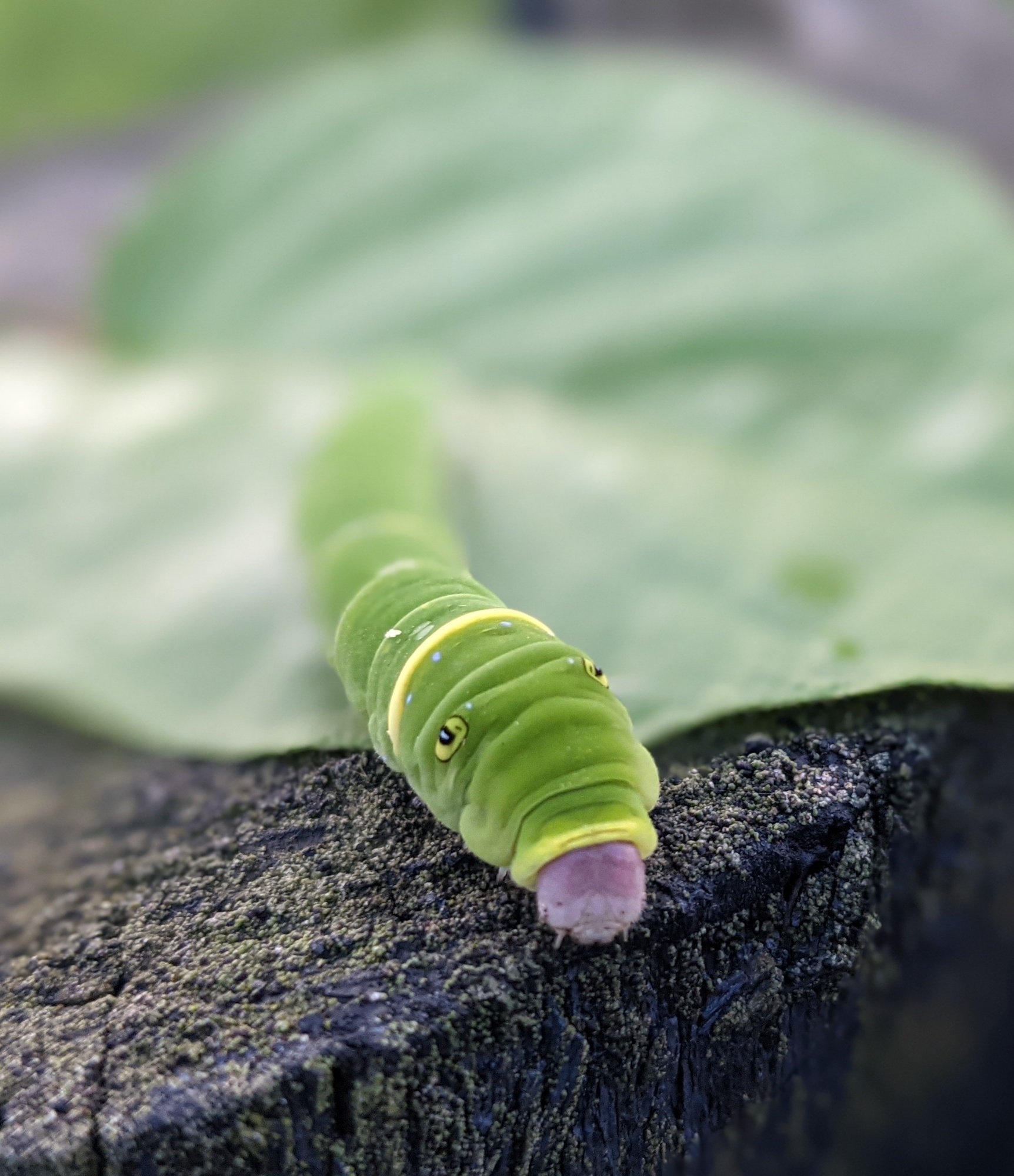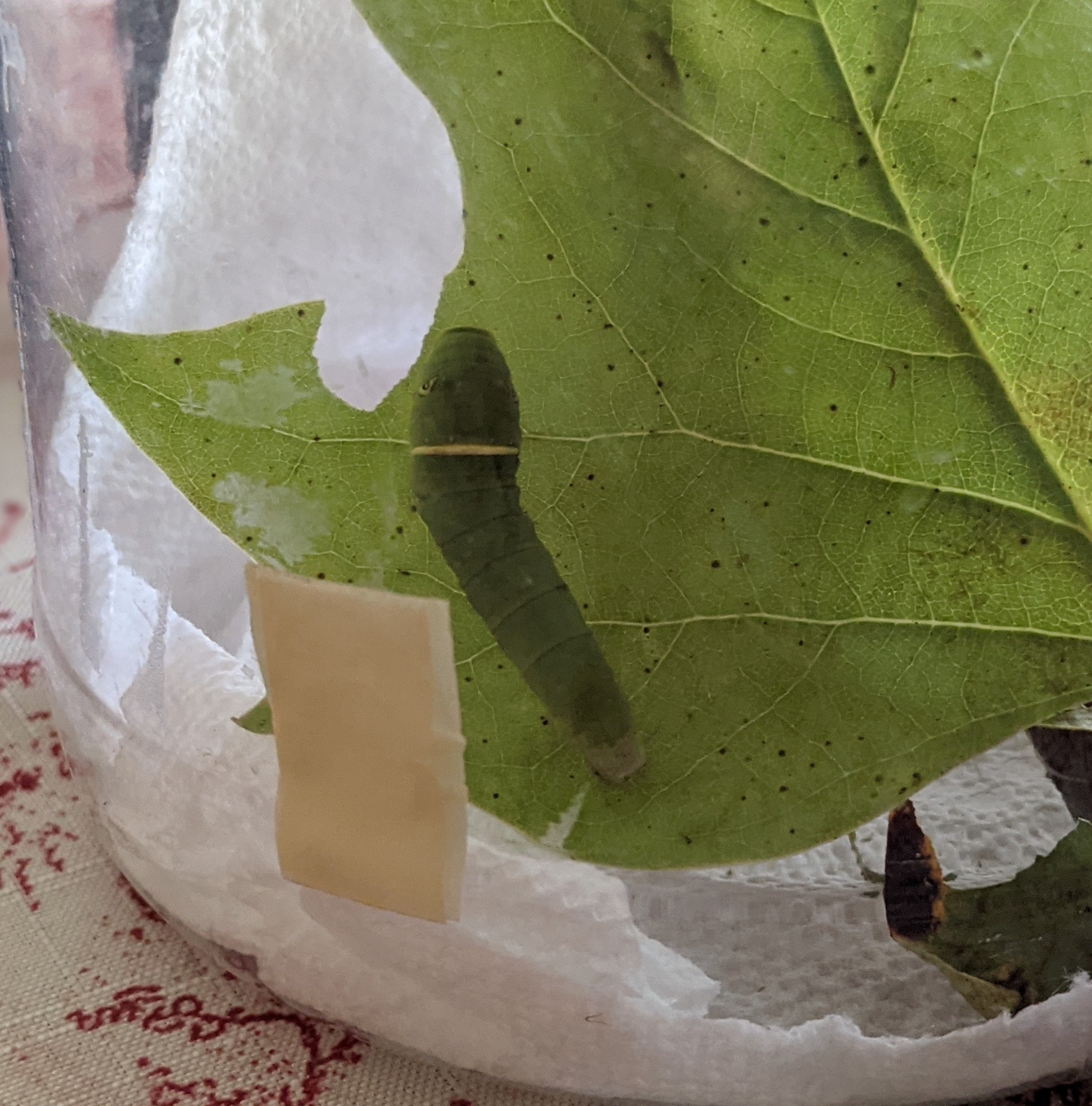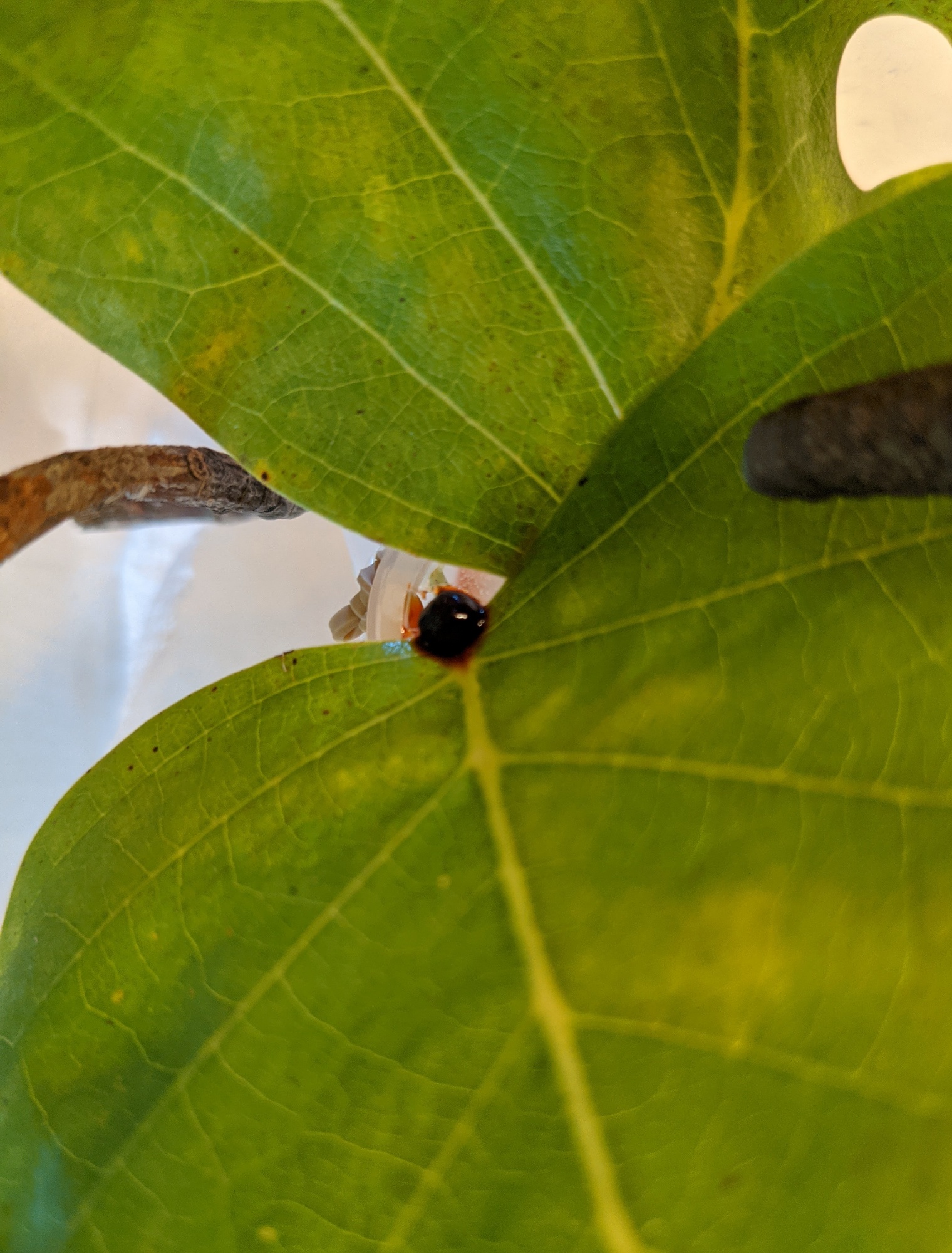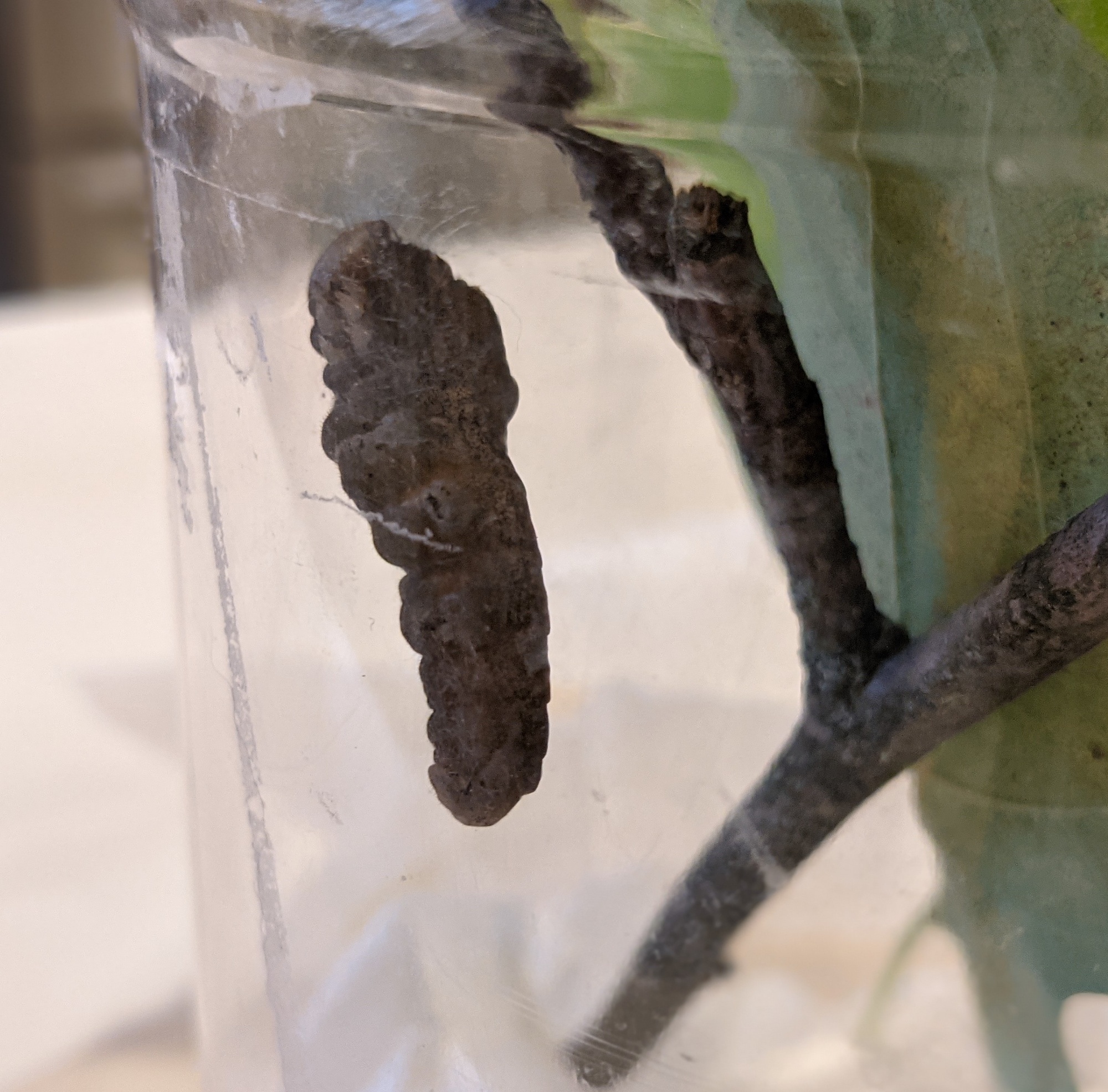
I’m happy to share that, yes, the caterpillar is still alive. And there’s a new development that leads me to believe that it’s nearly time for it to form its chrysalis, heralding its impending transformation into a beautiful butterfly!
The caterpillar had been happily eating a large tulip poplar leaf (though it was becoming increasingly difficult to find green tulip poplar leaves, as most have changed color and dropped from the trees) daily, blending in with the leaf so well that it left no doubt in my mind that it, at that stage, was perfectly camouflaged by design. Even the gold “ring” in its head area matched the gold veins in the leaf! Amazing.

In watching the caterpillar go about its business (and it spent much of the time just hanging silently from the walls of its habitat or on the leaf), I also saw that it had developed some dark spots on its skin. I worried that it could be some kind of parasite or fungus, as it seemed to spread a little each day. Researching it, though, brought me to a dead end: it didn’t seem to match the signs of parasitism or fungal infection. The caterpillar also seemed otherwise healthy.
This morning, when I went to check on my little green friend and clean its habitat (frass is good), I did a double-take: it was no longer green! It had actually turned brown. As I moved the caterpillar on its leaf, I saw it move – whew – and realized that it was fine, other than the dramatic color change.

More research led me to conclude that the caterpillar had merely moved on in its development (turning the exact shade of brown of a tulip poplar twig), and that it was almost time for it to pupate. It also disgorged what looked like a bloody clot, which is alarming to see, but that’s also just part of the process of the caterpillar’s preparation for pupation.

The caterpillar’s camouflage is truly remarkable: the pattern on its skin mimics the bark of the tulip poplar so closely, down to minute details, that it would be extremely difficult to spot it hanging on a branch.

It’s exciting to know that it shouldn’t be long before the caterpillar “assumes the position”, hanging by its back end from (hopefully) a twig and forming its chrysalis. Reality check: even once a chrysalis is formed, it can take several weeks for the caterpillar to transform in to a butterfly; in addition, this particular type of butterfly may “overwinter” in its chrysalis and not emerge until next spring.
Whatever its timeframe, the caterpillar is welcome to take as long as it needs to complete its metamorphosis. As the weather is growing colder here, it might be better if it did remain in its chrysalis until spring for the best chance of finding a mate.
Hear the caterpillar eating below:
If you liked this post, you might also enjoy the book The Sound of A Wild Snail Eating by Elisabeth Tova Bailey.
